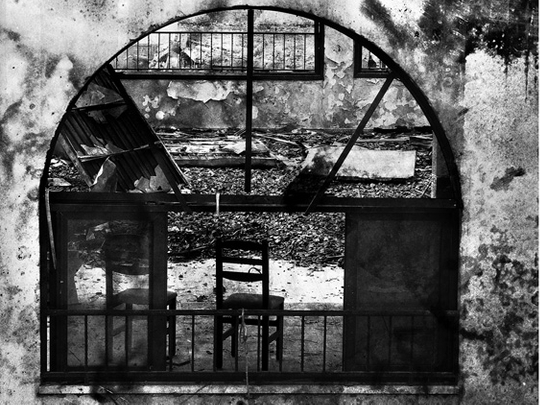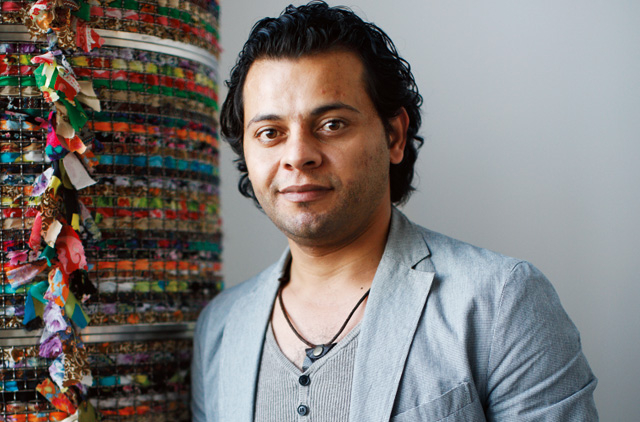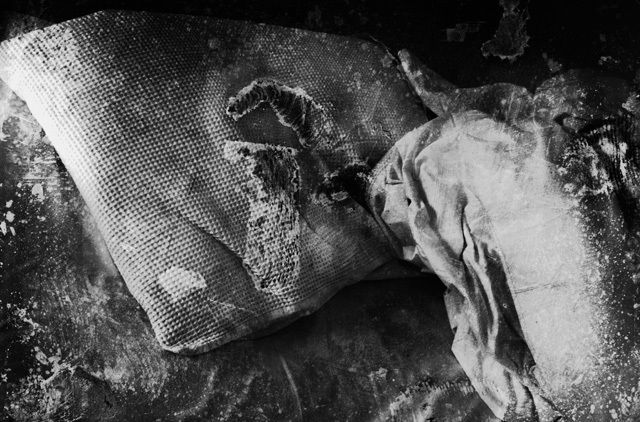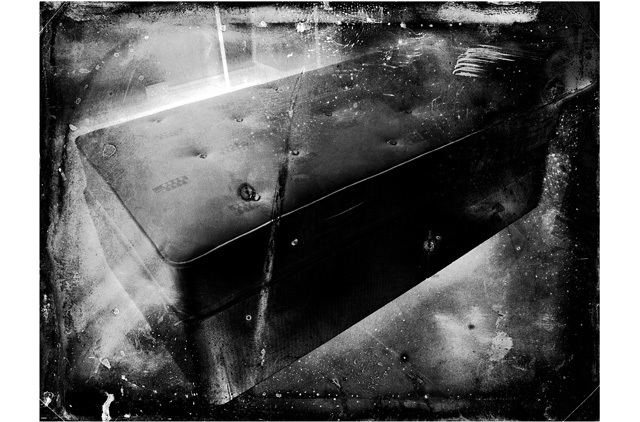
For those who have never been there, Gaza conjures up images of destruction, suffering, angry protests, blockades and an endless cycle of war and retribution. While Israel formally ended its occupation of the Gaza Strip in 2005, the ground reality is that it tightly controls the flow of people and goods into Gaza. Thus a sliver of land, home to nearly two million people, is today the world’s largest open-air prison camp.
The first question people are asked at the checkpoint, “Is this your first time in Gaza?” is also the title of Palestinian artist Hazem Harb’s video installation, which captures the painful process of entering Gaza. “Nothing prepares you for the abject disrespect and humiliation with which you are treated. The soldiers seem obsessed with obstructing movement, not only in the Gaza Strip but in all of Palestine,” says Harb. Barely over two minutes long, Is this your first time in Gaza? seethes with suppressed anger and a deep sense of loss. Harb insists it is more melancholy than rage.
“This is the daily routine of life there, entering and exiting, departure and return, day and night. I explored the physical relationship between fixed and mobile objects, and between these objects and the human body. I evoked the atmosphere that prevails in those places called ‘borders’, with their oppressive atmosphere, which overwhelms the traveller. The colours and the light at these places is faint, yet suffocating.” Harb could not film in his hometown, so it took place as a theatrical performance and the work was conceived as a video installation.
Born in Gaza, 32-year-old Harb describes himself as a child of the Second Intifada. In halting English, interspersed with a few stray French and Italian phrases, Harb describes life under occupation. Building materials – steel, wood and concrete – cannot be brought into Gaza as they may be used to build bunkers and launch rockets into Israel.
“We harvest what we need to rebuild our homes from bombed-out buildings. Everything in Gaza gets recycled, even stones embedded with white phosphorus bombshells.” In 2009, Israel allegedly used white phosphorus bombs in Gaza’s residential districts, in contravention of international law.
“If we were to talk of injustice, we could be here all day,” he says, taking in the bustling café where we are having our chat. “We did not have the opportunity for a normal life. I was seven when the Intifada started and only after I left Gaza at 18 did I realise it’s not normal to grow up seeing your friends’ homes bombed and gun-wielding soldiers all around. But that was our ‘normal’ and we adjusted to the situation. This is something very familiar to a Palestinian child, which is to assume a kind of political congeniality, or rather an understanding of the politics of the land.”
All things considered, he says, he had a reasonably happy childhood, growing up with his parents and seven siblings in the crowded Shijaia suburb of Gaza. Harb’s mother encouraged his drawing – he drew on walls, pillows, any surface he could find. “Being in a large family means I didn’t get all the attention I wanted. But art was a means of escaping the reality all around.”
After studying at the YMCA, the only art school in the Gaza Strip, he left with a scholarship to continue his higher studies. In 2004, Harb enrolled at the Academy of Fine Arts in Rome, and graduated from The European Institute of Design in the city in 2009.
“I always had a strong conviction that I would not do anything other than produce art. The political climate and the conflict I experienced as a child, had a major influence on everything I produced like anyone else who is directly influenced by whatever context they are born into.”
He tears up talking about his last visit to Gaza in 2008, which was for his mother’s funeral. The rest of his family still lives there. The time spent in Europe, where he still lives, led to a certain level of maturity and viewing the world he left behind through the eyes of an outsider. “I tried to address many of the issues of conflict differently and to put forward a more humanistic approach to understanding the conflict, away from the dubious political scene.” In this sense, Harb’s work captures the universal angst of the dispossessed, the disenfranchised and the colonised.
A multidisciplinary artist, the core themes of his work are war, loss and trauma. In his Remains series, Harb uses a photomontage to explore private spaces in the aftermath of a bombing. The pictures focus on more intimate spaces, such as bedrooms, which are now in public view, capturing intricate details on the bedding and the shapes of the rooms after the devastation. The creative process was labour-intensive: Harb printed the original photographs, painted the surfaces with ink and then reproduced these on a larger scale. The effect is chilling, yet there is an elegant dignity in the despair. Harb says of Remains, “The psychological effects of any conflict stay with you.
I turned that experience into a visual narrative, raising questions about that conflict, and what it is like to live under the longest occupation witnessed the history of mankind. I do not want to present horrific details of conflict, but rather the effects it has had on everyday people, on their homes, or in this case, what was left behind.”
I ask him if given his cultural heritage, it was inevitable that he would use his art to make a political statement.
“There is a fine line between art and politics and there are certainly a lot of artists who make politics their business,” he says. “I do not subscribe to political discourse in art, but I simulate a reality and deal with humanistic issues, which is why I approach my work through conveying people’s feelings and the concerns of suffering people. Politics does not care about the issues of humanity. I am a man trying to put across a point of view about my reality; I’m doing art for art’s sake. I ask my questions through my art.”















